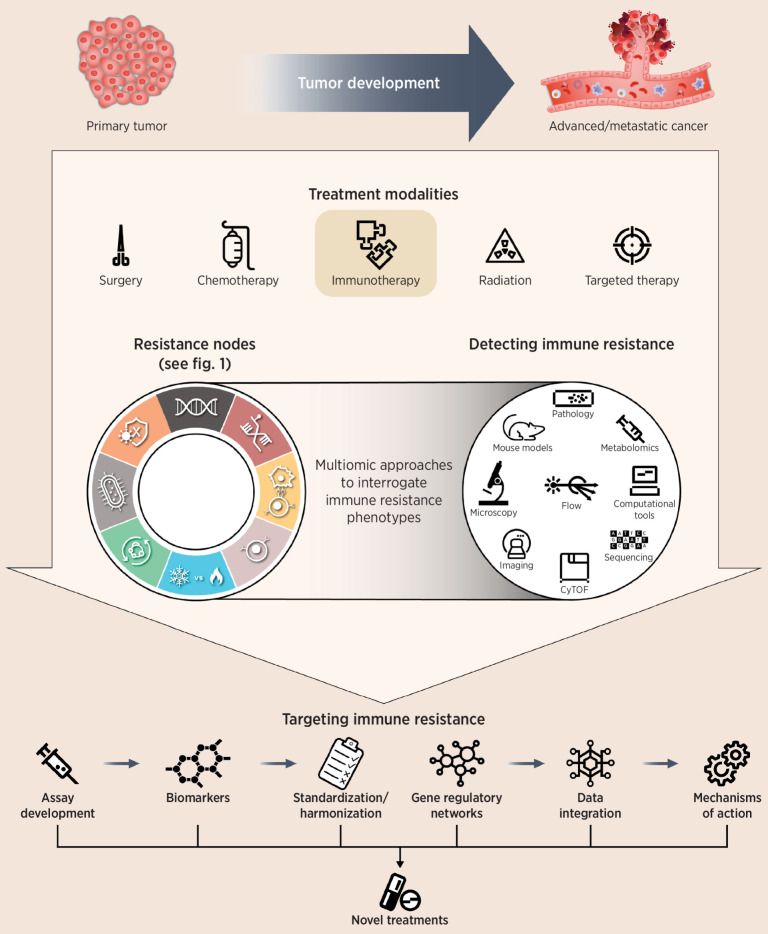Figure 2.
Efforts to better understand resistance continue to be of great interest to the oncology community. We postulate that resistance mechanisms to immune-checkpoint blockade converge on eight resistance nodes. A deep and systematic characterization of the eight resistance nodes, using integrated multiomic measurements, is likely to inform better clinical trial design, identify clinically actionable insights, discover composite biomarkers, and reveal new drug targets and treatment combinations. Future advancements will likely provide highly accurate prediction capabilities, making it possible to identify patients who might resist immunotherapy so that more meaningful treatments can be applied. CyTOF, cytometry by time of flight.

